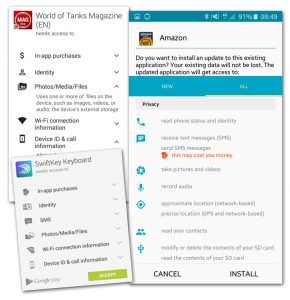Use project management metrics to enhance your hiring strategy and ensure your team’s composition aligns with operational efficiency.
Data-driven insights tell an organization’s story. It makes sense that you’re already using project management metrics to ensure projects are on track, on time and on budget. However, if you’re using your project management data for only that, you’re probably not getting all the value you can from the metrics you’re capturing.
Fundamentally, metrics enable insights into performance against goals. You’ve heard the saying, “What gets measured gets managed.” Metrics allow you to manage your business through data to meet or exceed targets and deliver maximum value. They guide us in making evidence-based decisions and ultimately drive business improvements. They are often tactical and used to inform operational optimization.
The value of project management metrics
Project management metrics are expected to be applied to track quality or identify process improvements. It’s table stakes for project management metrics to focus on “what” you deliver (e.g., volume, complexity, level of effort) validated against objectives to illustrate effectiveness:
- Quality: Accuracy and satisfaction.
- Speed: Cycle time and on-time delivery.
- Cost: Within budget and competitive in price.
Don’t stop there. Use project management metrics and data to draw out additional strategic insights. For example, you can use them to guide your team’s composition, capabilities and staff structure. This valuable and perhaps less frequently applied lens for project management metrics informs the “who” you hire to deliver on the “what.”
It’s always worth considering ways to maximize your data’s impact. Explicitly leveraging it to calibrate your hiring is one distinct way. Use it to ensure your staff is optimized to deliver on the “what” most efficiently — informing and guiding the “who” to align talent to task and demonstrate:
- Quality: Capabilities.
- Speed: Capacity.
- Cost: Staff type.
Leverage data to ensure you have the right talent
Start with the project data you track around deliverables — volume, complexity and level of effort. Use that to evaluate whether or not you have the right skill sets and enough people to deliver on your SLAs. Do you have the ability to flex up and down with changes in volume? If so, is your structure cost-efficient?
Review the assigned roles and the scope of skills needed to deliver the work. Consider how you drive quality to provide client satisfaction. Take into account the capabilities of generalists and specialists. Introducing specialist skills can enhance quality, bringing higher expertise to delight clients with innovation or unexpected ways. Combining generalists and specialists allows for a blend of strengths in different areas.
When project management metrics are established, service-level agreements (SLAs) for turnaround times should be appropriately responsive to business needs. Capacity must align with demand volume. Niche skills also contribute to the ability to deliver at speed.
If you have experienced, highly skilled experts, the cycle time may be shorter, allowing you to maintain schedules or even deliver early (potentially increasing the quality of client experience).
Unless your demand is consistent in volume (lucky you!), consider a flexible staffing model. Balancing your staff with full-time, part-time and freelance staff is an excellent method of managing variable needs while maintaining target utilizations that ensure billability and the financial health of your team.
As you run your marketing team or creative marketing agency, consider how you can apply this strategy. For example, your team or agency is growing and taking on a variety of projects, from simple, low-cost ones to complex, high-cost campaigns. In practicality, though, you can’t be everything to everyone. You must carefully decide what direction you’re going to strategically grow your business.
Will it be creative marketing campaigns (i.e., high complexity with high-profit margins)? Or will you take on creative marketing production (i.e., low complexity, low-profit margins and high volume)? As you choose your “lane,” so to speak, you’ll use that data to inform your overall hiring strategy.
Continuous calibration and alignment of hiring strategies
Expect business cycles and prepare for them. Your hiring strategy needs to adapt to these changes. Your team’s skills will likely need to evolve, too. Given the time and effort required to hire and onboard staff, cultivating a culture that invests in skill development is beneficial. Opportunities to enhance skills may aid in retaining talent, providing stability where helpful and motivating staff with your investment in them.
There is a straightforward four-step process to calibrate continually. (It doesn’t have to be complicated to be good!) It’s important to note this is not linear and it’s an ongoing cycle:
- Define success metrics and track data that inform progress against goals.
- Define a team with the right mix of skill sets and the right-sized staffing model.
- Establish a growth culture that evolves skills to keep pace with business needs.
- Review your project management metrics and evaluate success in delivering against KPIs.
Make this process a part of your best practices to evaluate what your internal data is showing you. By thinking critically about data and team needs and establishing a growth culture, you intentionally position the organization for stronger success.
Putting it all together
People are a valuable resource. Looking at your project management data differently and critically can guide organizations in hiring the right people. Committing to a calibration cycle can inform an expert hiring strategy that aligns with evolving business.
The combined result is optimization for near-term success, demonstrated with project management data. In the long term, you can build an operational model that continues to grow with the business. This approach is well-positioned to aid you in securing a future-proof organization, delivering benefits across the board to the business, the team and the individual.
The post How to use project management data to inform your marketing hiring strategy appeared first on MarTech.
MarTech(6)
Report Post







